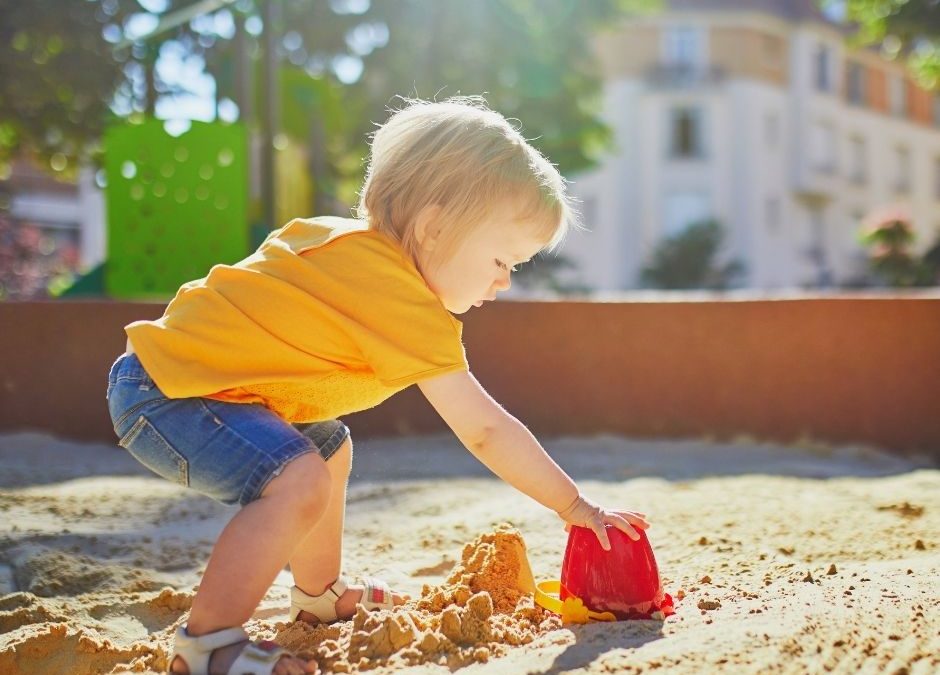Watching the way in which children play gives us an understanding of their development and social skills. The stages of play were studied and defined in the early 1900s by sociologist Mildred Parten and these are what we still use today. Children tend to move through the stages as they develop, however they will revisit earlier stages at different times.
In my work at Kindy teacher, I have witnessed a lot of the later stages of play, associate and cooperative play. Now with an 18-month old, I am spending more time around younger children and seeing the earlier developmental stages.
Unoccupied Play
As soon as they are born babies are playing. While it might not look like much, when a baby is given time to look around the room they are beginning to understand the world around them. During unoccupied play babies don’t seek out social interaction, they might look at a toy or a bright light and are free to move their arms and legs around.
Solitary or Independent Play
Solitary or independent play is a skill that we want our children to have! This type of play is most common in babies and toddlers. They are focused on their own game and do not seek social interaction or attempt to share resources. You might notice your toddler playing with a ball by themselves or driving a toy car around. My daughter loves kicking a ball around the backyard.
Onlooker Play
Onlooker play can occur at any age but is common in the toddler years. We also see onlooker play when a child is in a new situation or with older children. This type of play involves observation without any attempt to join in the game. Children may engage socially or ask questions but are happy watching. I see this behaviour in my daughter when we are hanging out with her older cousins.
Parallel Play
During parallel play, children are focused on their own activity or game. They do not share or interact with others but will often choose to be in a shared space such as sitting on the carpet building beside other children who are also playing with blocks. Children are beginning to realise that their are others around but aren’t ready to engage in social play yet.
Associative Play
Associate play occurs as parallel play develops, children who were playing alongside each other will begin to engage socially and share resources. However, they will still be focused on their own game and won’t be working towards a common goal. We see this type of play emerging around 3 years old.
Cooperative Play
We see cooperative play in Kindergarten children, it is highly social and requires well develop social skills. In cooperative play, there is a shared goal. Children are able to share, negotiate, assign roles and develop and follow rules to achieve their common cause.
Knowing the type of play that your child is engaged in gives you an insight into their social skills and an understanding of how their development is progressing.


Recent Comments